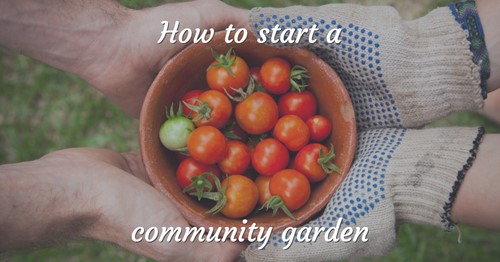
Community gardens can be a great way to increase urban farming and maintain the native species of the area. They’re excellent ways to help maintain fresh food while creating green space for folks to enjoy. These gardens can be started by anyone, though you should ensure everyone participating in the project is legally allowed to garden on the property being used.
Here’s a quick guide to creating a community garden that you and your neighbors can enjoy:
Get the area cleaned up
The most important starting point is getting the space cleaned up. If there are large or industrial bouts of cement or other materials, be sure to have a certified professional help break up and dispose of those pieces before you get started.
For land with only weeds, dead brush and other organic plant matter, an afternoon of yard work should be all it takes to clean up the area. Once cleaned, you can design your community garden with your neighbors.
Create the garden boxes and replace the soil
After cleaning the area and designing your plots, it’s time to build the containers you’re going to plant in. These containers can be floating garden boxes for smaller items such as herbs or small greenery. For deeper planters, try creating boundaries of concrete or wood.
Once you have your planters created and set up, it’s time to replace the soil. Most home improvement and garden stores will have soil with specific nutrients to help your garden thrive.
Plan & plant your garden
With the containers set up, now it’s time to plant your garden. Some plots may be large enough for seed balls, especially if the area is frequented by small creatures or harsh weather. For areas that may not need as much protection, plant seeds evenly and with enough room to start rooting.
Be sure to incorporate some native plants into your community garden to ensure the ecosystem stays intact.

Now you and your community can sit back and watch your garden grow as you all continue to cultivate it together. Anything that isn’t immediately used by neighbors in the community can be donated to local shelters, while the non-edible plants can be used as decoration for your homes and the rest of the neighborhood.
About the Author

Jodie Franklin
I love helping people find their dream home or sell their house in order to achieve their next goals. I have been working hard for my clients for over 18 years throughout southeast Michigan. I have experienced every kind of transaction there is.
Helping my community and being involved is extremely important to me. I am Past President of the Michigan Ability Partners board, which helps Veterans and people with disabilities reach independent, self-supported, and satisfying lives. I have also been a member of the City of Milan Tax Review Board and Zoning Board, and involved in Milan Main Street. I have been a major sponsor of events for Michigan Ability Partners, Aid in Milan, Milan Main Street, and many more organizations that work to make our communities better.
I was 2018 President of the Ann Arbor Area Board of Realtors, Realtor of the year in 2016 for AAABOR and nominee for Michigan Realtor of the Year. I serve on many committees with the local board, state board and was a member of the Housing Opportunity Committee for the National Association of Realtors (2018-19). I am currently serving my second term as a Michigan Realtors Board of Directors.
I have liked in Milan for over 20 years and enjoy living here with my husband Cliff, son Evan, and dog Rosie.